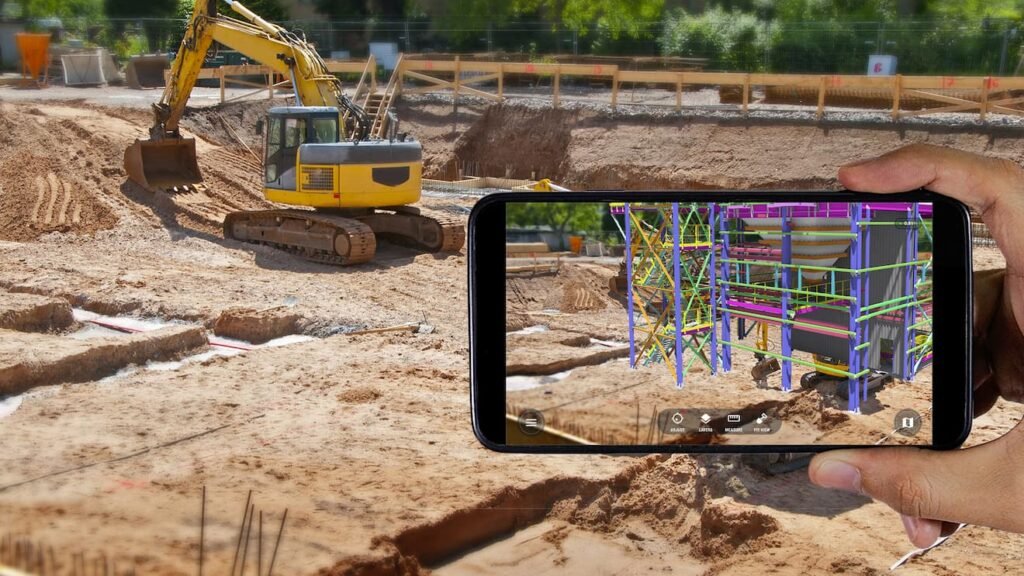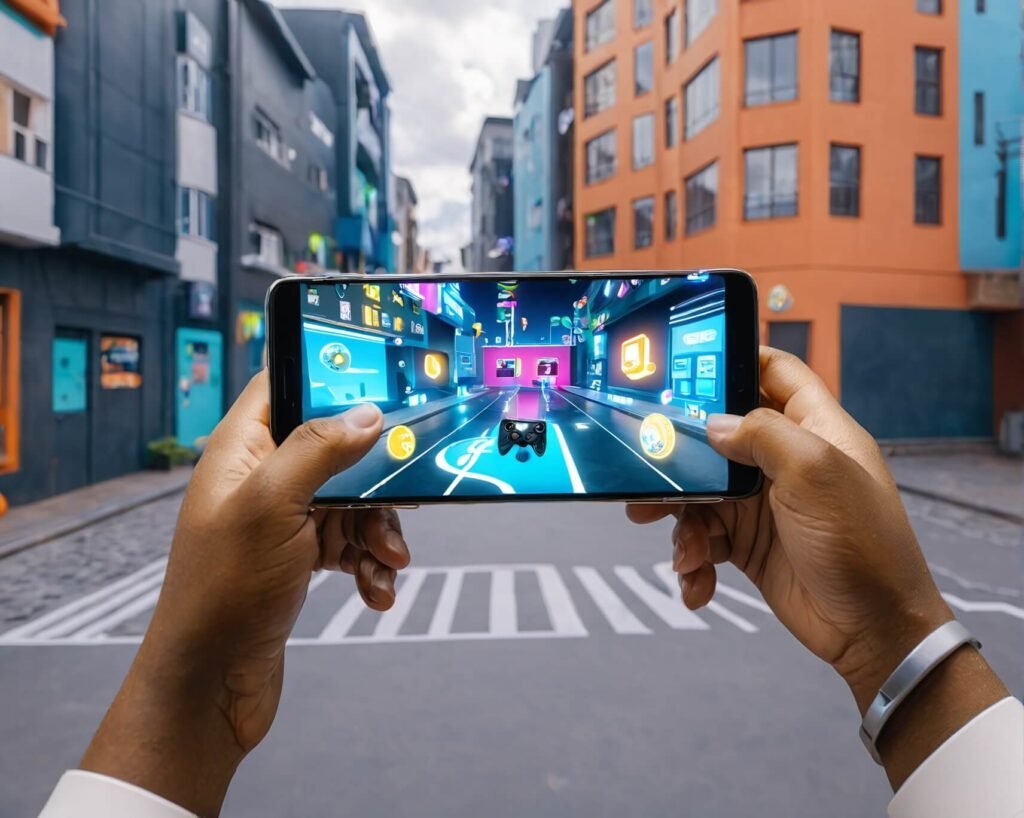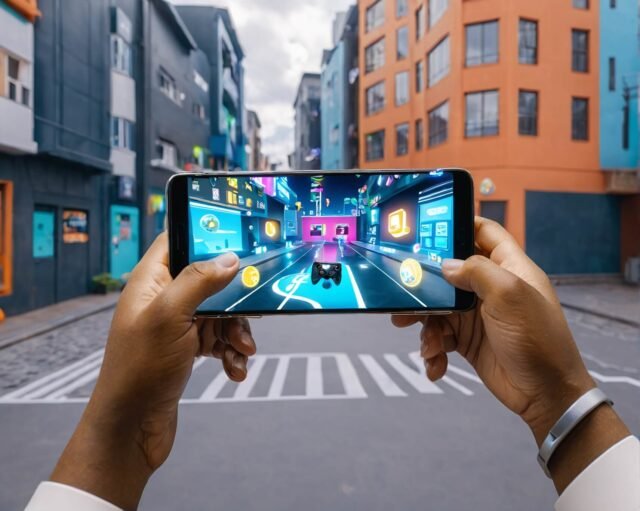The global appetite for immersive technologies is spilling rapidly into emerging markets, and Nigeria is finding itself at the centre of this momentum. While conversations about innovation often focus on Artificial Intelligence, another technology is steadily building influence: Augmented Reality.
Across infrastructure inspection, construction management, and urban development, Nigerian engineers are beginning to explore how this tool can solve long-standing challenges. What used to be dismissed as a futuristic luxury for gaming or entertainment is now being recognised as a practical solution to the country’s pressing infrastructure problems.
Globally, the shift has already started. In Europe, Asia, and North America, construction firms and city planners rely on Augmented Reality to detect faults, cut inspection costs, and reduce accidents. For Nigeria, which faces recurring safety lapses in buildings and bridges, the technology offers an opportunity to leapfrog traditional methods and strengthen infrastructure resilience.
Dr. Jamiu Lateef, a Nigerian researcher at Case Western Reserve University in the United States, says the signs are clear: the country can no longer ignore this wave. “Inspection teams that adopt Augmented Reality can see structural weaknesses in real time, match them with historical data, and take faster action. It is about precision and safety,” he notes.

Table of Contents
Why Nigeria Is Paying Attention
Infrastructure inspection in Nigeria has long relied on manual routines—engineers armed with clipboards, hand tools, and scattered reports. These approaches are not only slow but also prone to error. A missed crack on a bridge pillar or a poorly documented inspection can later translate into tragic accidents.
With Augmented Reality, inspectors can now wear headsets or use smartphones that project digital overlays directly onto the physical structure they are examining. For example, while standing under a bridge, an engineer could see previous repair records or stress analysis data superimposed on the concrete. Instead of flipping through files or consulting off-site databases, the information is available instantly, tied to the exact location.
This efficiency not only saves time; it also saves lives. Dangerous areas can be flagged on-screen before inspectors approach them, reducing exposure to hazards. For younger engineers, guided overlays act like a virtual mentor, walking them through safety steps and inspection checklists. For senior experts abroad, the system makes remote guidance possible, ensuring local teams benefit from global expertise.
Several Nigerian firms are already testing such systems in urban projects. While adoption is still in its early stages, the growing interest mirrors a global trend: infrastructure agencies moving beyond pilot programmes into full-scale deployment.

Opportunities and Obstacles
Like every innovation, Augmented Reality carries both promise and limitations. For Nigeria, the opportunities are compelling:
- Efficiency gains: Faster inspections reduce downtime and cut operating costs.
- Safety improvements: On-site risks fall as inspectors rely on digital prompts instead of manual guesswork.
- Data integrity: Every observation, photo, and annotation is stored in a central database, linked to specific assets.
- Predictive planning: Combined with Building Information Models (BIM) and digital twins, AR tools help forecast when maintenance will be required, preventing costly failures.
Still, there are hurdles. The hardware is not always suited for Nigeria’s tough environments. Battery life, calibration, and weather resistance remain concerns. Beyond devices, the real test lies in building human capacity and creating unified standards. Without consistent checklists and protocols, adoption could be fragmented.
Data governance also looms large. Who owns the inspection data captured through Augmented Reality? How is it stored, protected, and shared between government agencies, contractors, and regulators? These are questions Nigeria must answer early to avoid disputes later.
Finally, cultural resistance cannot be overlooked. Some practitioners, trained for decades in manual systems, may see AR as a distraction. It will take targeted training, policy incentives, and pilot demonstrations to build trust in the technology’s value.
The Road Ahead for Nigeria
Nigeria stands at a crucial juncture. Its infrastructure network is ageing, its population is growing, and its economy depends heavily on reliable transport and utilities. To maintain and upgrade assets efficiently, the country must adopt modern solutions. Augmented Reality presents one of the clearest opportunities to modernise inspections, reduce accidents, and safeguard national investments.
The pathway forward could involve:
- Strategic pilots – Government agencies selecting flagship projects such as bridges, airports, or dams to showcase AR’s value.
- Capacity building – Universities and training institutes integrating AR skills into engineering curricula.
- Public-private partnerships – Collaboration between regulators, tech firms, and construction companies to share expertise and costs.
- Robust standards – Development of national inspection protocols and data policies tailored to Nigeria’s realities.

If Nigeria chooses to act, it can move from catching up to setting regional benchmarks. Neighbouring countries already look to Nigeria for leadership in innovation; adopting Augmented Reality at scale could reinforce that reputation.
The global push for AR is no longer an abstract movement. It is a practical shift reshaping how societies protect their infrastructure. For Nigeria, embracing this change is not about following a trend—it is about ensuring safer roads, stronger bridges, and smarter cities.
In a world where technology increasingly defines progress, Augmented Reality may well become the unseen guardian of Nigeria’s infrastructure future.
Join Our Social Media Channels:
WhatsApp: NaijaEyes
Facebook: NaijaEyes
Twitter: NaijaEyes
Instagram: NaijaEyes
TikTok: NaijaEyes





